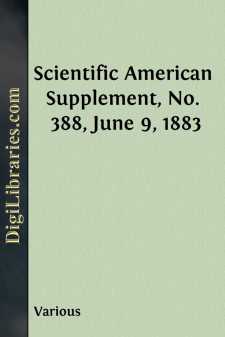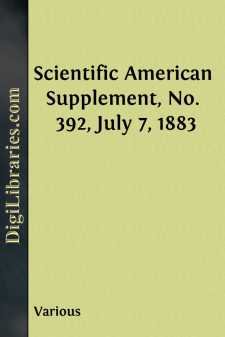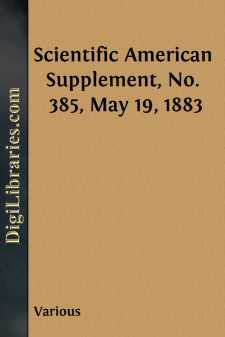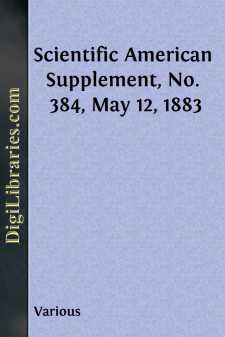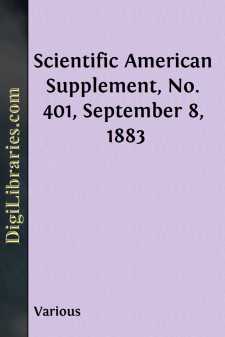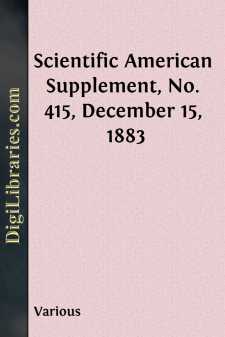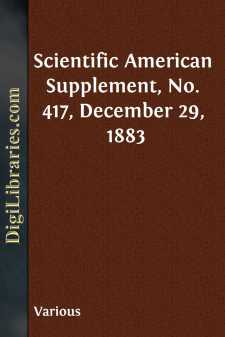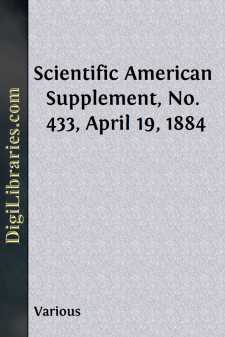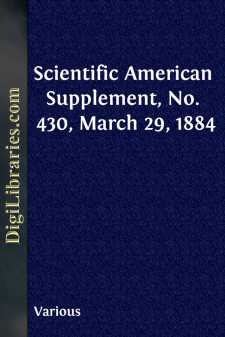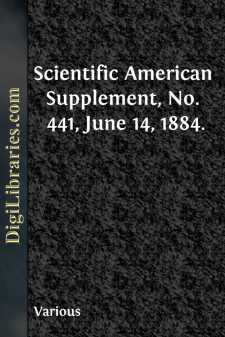Periodicals
- Art 27
- Children's periodicals 59
- Entertainment 5
- Food/Wine 2
- Games/Humor 455
- General 661
- Health 1
- History 53
- House/Home 1
- Regional 62
- Science/Nature 118
- Transportation 10
Periodicals Books
Sort by:
by:
Various
FARCOT'S IMPROVED WOOLF COMPOUND ENGINE. In a preceding article, we have described a ventilator which is in use at the Decazeville coal mines, and which is capable of furnishing, per second, 20 cubic meters of air whose pressure must be able to vary between 30 and 80 millimeters. In order to actuate such an apparatus, it was necessary to have a motor that was possessed of great elasticity, and...
more...
by:
Various
IMPROVED DYNAMO MACHINE. The continuous current and the alternating current generators invented by Dr. J. Hopkinson and Dr. Alexander Muirhead are peculiarly interesting as being probably the first in which the bobbins of the armature were wound with copper ribbon and arranged on a disk armature much in the same way as was afterward done by Sir William Thomson and by Mr. Ferranti. In the...
more...
by:
Various
THE RAPHAEL CELEBRATION AT ROME. The most famous of Italian painters, Raffaele Sanzio, whom the world commonly calls Raphael, was born at Urbino, in Umbria, part of the Papal States, four hundred years ago. The anniversary was celebrated, on March 28, 1883, both in that town and in Rome, where he lived and worked, and where he died in 1520, with processions, orations, poetical recitations, performances...
more...
by:
Various
LOCOMOTIVE FOR ST. GOTHARD RAILWAY. We give engravings of one of a type of eight-coupled locomotives constructed for service on the St. Gothard Railway by Herr T.A. Maffei, of Munich. As will be seen from our illustrations, the engine has outside cylinders, these being 20.48 in. in diameter, with 24 in. stroke, and as the diameter of the coupled wheels is 3 ft. 10 in., the tractive force which the...
more...
by:
Various
MONUMENT TO CHRISTOPHER COLUMBUS, AT BARCELONA, SPAIN. The cultivated and patriotic city of Barcelona is about to erect a magnificent monument in honor of Columbus, the personage most distinguished in the historic annals of all nations and all epochs. The City of Earls does not forget that here the discoverer of America disembarked on the 3d of April, 1493, to present to the Catholic monarchs the...
more...
by:
Various
THE GERMAN NATIONAL MONUMENT.--WAR AND PEACE. In our SUPPLEMENT No. 412 we gave several engravings and a full description of the colossal German National monument "Germania," lately unveiled on the Niederwald slope of the Rhine. We now present, as beautiful suggestions in art, engravings of the two statues, War and Peace, which adorn the corners of the monumental facade. These figures are about...
more...
by:
Various
In my presidential address, which I had the pleasure of reading before this society at our first meeting this year, I called attention, somewhat hurriedly, to the results of a few of my experiments on induction, and at the same time expressed a hope that at a future date I might be able to bring them more prominently before you. That date has now arrived, and my endeavor this evening will be to...
more...
by:
Various
THE FRENCH SCIENTIFIC STATION AT CAPE HORN. In 1875 Lieutenant Weyprecht of the Austrian navy called the attention of scientific men to the desirability of having an organized and continual system of hourly meteorological and magnetic observations around the poles. In 1879 the first conference of what was termed the International Polar Congress was held at Hamburg. Delegates from eight nations were...
more...
by:
Various
THE DODDER. The genus Cuscuta contains quite a number of species which go under the common name of dodder, and which have the peculiarily of living as parasites upon other plants. Their habits are unfortunately too well known to cultivators, who justly dread their incursions among cultivated plants like flax, hops, etc. All parasitic plants, or at least the majority of them, have one character in...
more...
by:
Various
FAURE'S MACHINE FOR DECORTICATING SUGAR-CANE. The object of the apparatus shown in the accompanying engraving is to effect a separation of the tough epidermis of the sugar-cane from the internal spongy pith which is to be pressed. Its function consists in isolating and separating the cells from their cortex, and in putting them in direct contact with the rollers or cylinders of the mill. After...
more...


